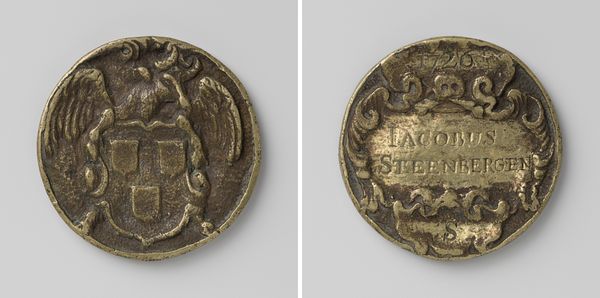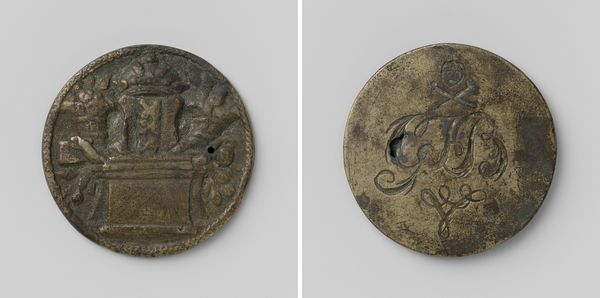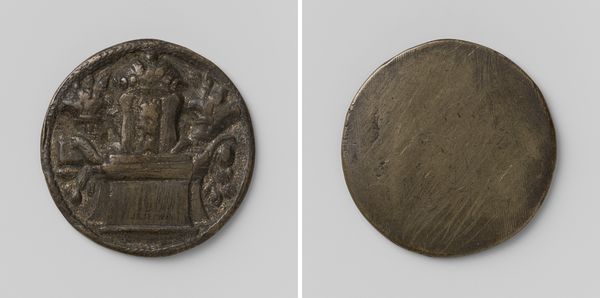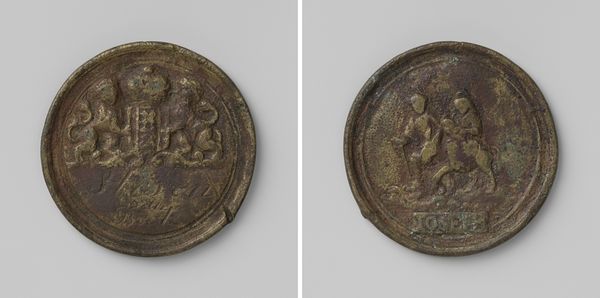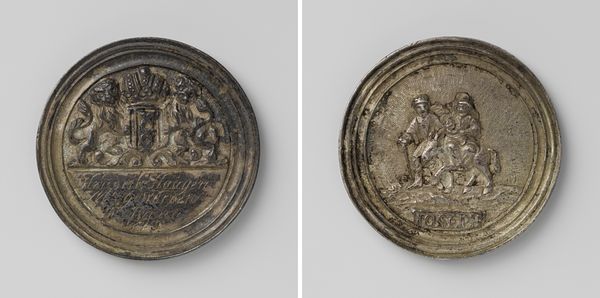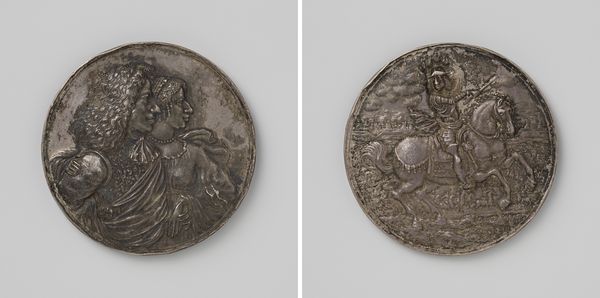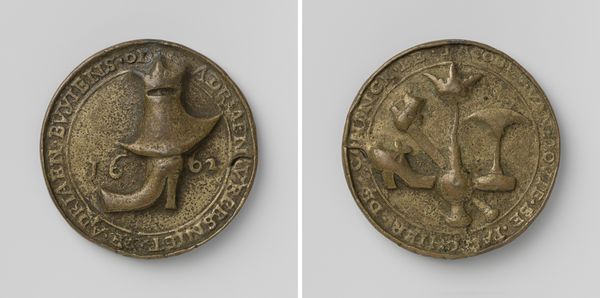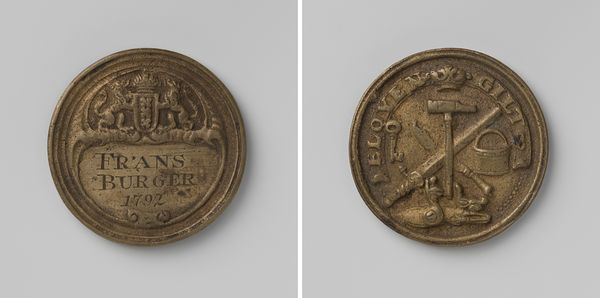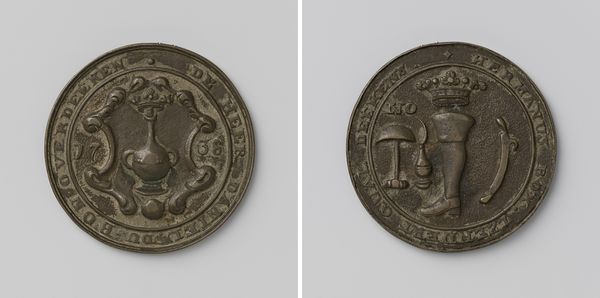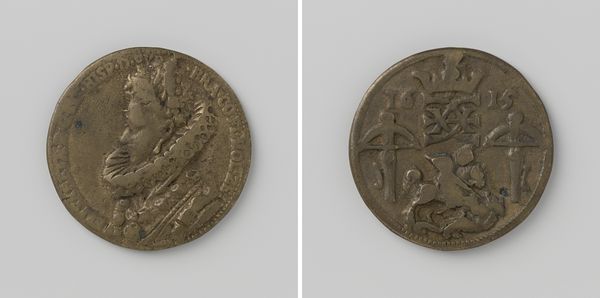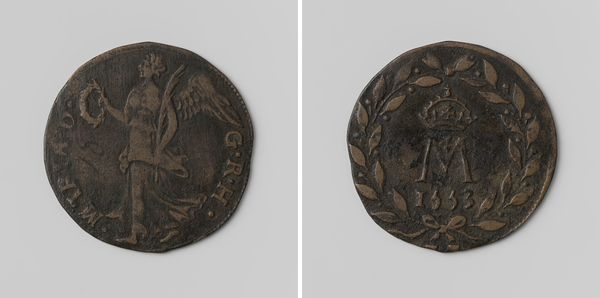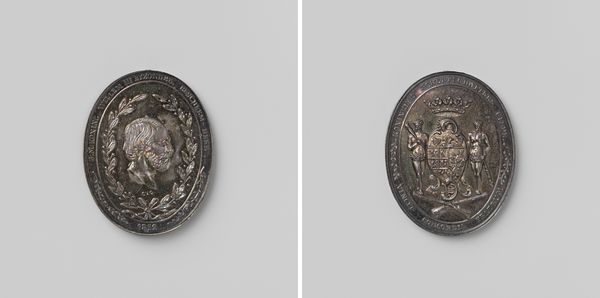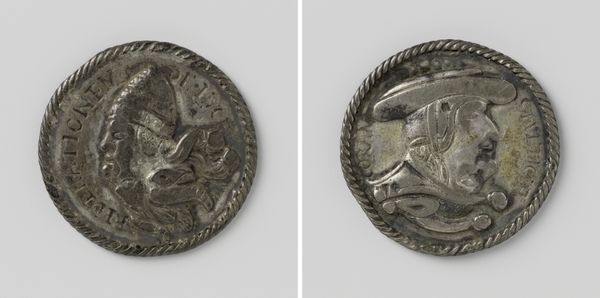
Dimensions: diameter 4.2 cm, weight 364 gr
Copyright: Rijks Museum: Open Domain
Curator: Well, this piece certainly has a story to tell. We're looking at a guild badge made in 1788 for Jacobus Hallemans, a painter in Amsterdam. It represents the Guild of Saint Luke. Editor: It strikes me immediately as rather austere. The metal is a dull silver or bronze and the low relief carving, while ornate, lends a rather weighty feel to the whole thing. A peculiar skull motif hovers on the right. Curator: You've noticed some key details. Guild badges were a form of identification and demonstrated membership. What seems to be the skull is perhaps a *memento mori*, a reminder of mortality—quite common during that period. Guilds protected their members' interests. Editor: Protecting interests meant enforcing standards, correct? I'm thinking about how art academies began to emerge, gradually reshaping what was acceptable artistic practice. A medal like this would solidify ideas around acceptable or quality craftsmanship. Curator: Precisely! Badges embodied power and privilege at a time when craft guilds played a huge role in economic life. On one side, the coat of arms declares a powerful legacy of tradition and heraldry. This visually reinforced an artist's place in society. Editor: So it's not merely decorative; it's actually staking a claim. It declares both Hallemans’ skill *and* adherence to a specific set of values – that the guild itself deems acceptable, traditional and valid. What is the material; do we know? Curator: The item is made of metal. The details are quite finely rendered despite its relatively small size; I imagine the act of physically wearing the medal must have signaled commitment and standing. Editor: Indeed, this small token echoes broader power structures. From this object alone, it's possible to appreciate something of the social dynamic during this particular moment in Amsterdam’s cultural history. Thank you for elucidating all of this. Curator: My pleasure. These objects really give us a chance to feel what it meant to belong and how art was understood in public life. I agree; so much history resides in this piece!
Comments
No comments
Be the first to comment and join the conversation on the ultimate creative platform.
